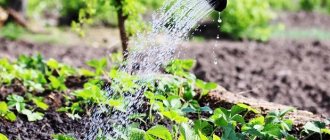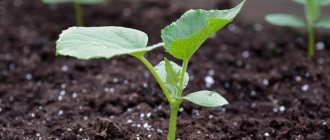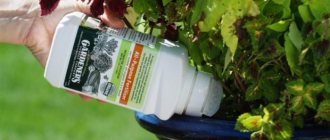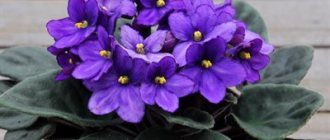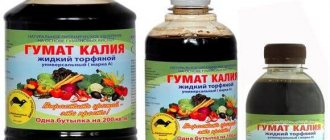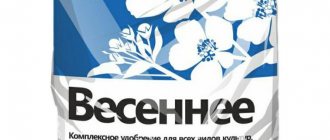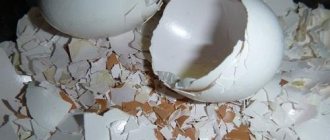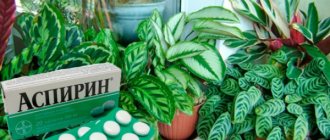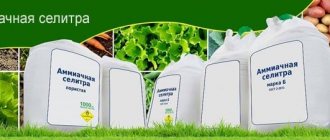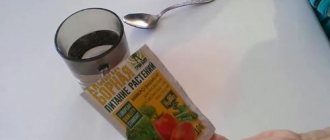- Promotes root development, improving their branching.
- Accelerates growth and activates photosynthesis.
- Potassium regulates water exchange in the plant.
- Improves the taste of fruits and their appearance.
- The harvest increases.
- Strengthens the immune system, increasing the plant's resistance to diseases and low temperatures.
Potassium nitrate - composition
It has already been mentioned that this fertilizer contains two main components that provide nutrition to the crop. It is worth noting that the composition of the potassium nitrate fertilizer, unlike other additives, contains more potassium (44%) than nitrogen (13%). This ratio allows this fertilizer to be used even after the plant has flowered and the ovaries have begun to form. It is important to consider that during storage the fertilizer cakes, but this does not affect the concentration of minerals.
How to properly use potassium nitrate (potassium nitrate) in the garden
Potassium nitrate is one of the fertilizers that is popular for its qualities and capabilities.
Old-timers claim that in addition to its effectiveness in achieving high yields, it becomes the main source of potassium for the soil. Suitable for all crops. Helps normalize plant growth. In addition to potassium, nitrogen is present, which makes it possible to use saltpeter as a fertilizer complex. It remains to study further the composition and instructions for preparing the liquid for feeding.
Behavior in soil
The transformation of potassium nitrate in the soil is due to interaction with the soil solution and the soil-absorbing complex of potassium ions and nitric acid in the substance. When applied to the soil, the fertilizer quickly dissolves in the soil solution.
Potassium cations interact with PPC, like ions of single-component potassium fertilizers, according to two types of absorption: exchangeable (physicochemical) and non-exchangeable (fixation).
The nitric acid anion provides the fertilizer with the properties of nitrate forms of nitrogen fertilizers. Nitrate forms, like those of single-component nitrogen fertilizers, move along with soil moisture and can only be absorbed biologically by plants or soil microflora in the warm season.
| Application calendar | |
| April | Main contribution |
| May | Pre-sowing application |
| June | Feeding |
| July | Feeding |
| August | Feeding |
Description and chemical composition
Potassium nitrate or potassium nitrate has the formula KNO3. The chemical formula shows the presence of two main components: potassium and nitrogen. When the ingredients are combined according to the calculated formula, a fertilizer is obtained that gives:
- accelerated development of cultures;
- increasing root strength;
- strengthening the root part;
- increasing plant immunity;
- adding nutrients to the soil.
The use of potassium-nitrogen composition is allowed as a top dressing due to the availability of nutrients. And also as an independent fertilizer to increase the protective functions of the plant.
Thanks to good immunity, the plant not only grows quickly, but also resists garden diseases and strengthens its resistance to parasitic insects. As a result of the effect of nitrate solution, we get: high yield.
Making your own formula is not recommended to avoid an overdose of ingredients. Suitable as fertilizer for:
- tobacco and beets;
- carrots and grapes;
- raspberries and strawberries.
To summarize, it is ideal for plants that cannot tolerate chlorine and its effects have an extremely negative effect on their development. Appearance: powdery or in the form of crystals. White color. There is no smell. Other names:
- potassium nitrate;
- potassium nitrate;
- Indian saltpeter.
Useful properties of the substance
Technical potassium nitrate is used from the moment the plant is planted in the soil. Suitable for literally any type of soil. Belongs to the class of universal fertilizers. It is a toxic substance, non-volatile, highly soluble.
It differs from most proposed fertilizer complexes, since it contains more potassium than nitrogen. The last ingredient is only in the amount necessary for minimal feeding. Allowed for use at a convenient time:
- during the growing season;
- during the formation of ovaries;
- after harvest.
Incredibly useful for crops that are planted in the garden or garden. Helps accelerate growth and enhance plant respiration. If saltpeter is used for winter plantings (garlic, strawberries, etc.), it enhances the frost resistance of the crop.
Rules for storage and safe use
Due to the fact that the drug in dry form tends to cake and absorb moisture, it is necessary to adhere to the storage rules:
- After opening the package, transfer the crystals or powder into an airtight glass container.
- Protect from exposure to UV radiation and hot air, as the product is highly flammable.
- For storage, choose a dark room, for example, a barn or utility room, protecting children and pets from contact with nitrate.
- It is not safe to mix fertilizers that have expired.
- After dilution, the drug cannot be stored for a long time. It is recommended to use the prepared composition immediately.
When working with chemicals, follow the safety rules:
- The use of the drug is contraindicated for persons with drug allergies.
- During processing, you must wear protective clothing, a respirator and gloves.
- After the procedure, you need to take a shower in hot water, change clothes, including underwear.
- If the product gets on the mucous membranes or skin, immediately wash off any remaining drug and consult a doctor.
- Do not store dry granules near flammable substances, open flames or heating equipment.
During the growing season of plants and the growth of green mass, active absorption of nutrients occurs. Accordingly, vegetables and trees may not have enough strength to ripen fruits. Low yields can be prevented by adding potassium nitrate.
The drug preserves and stimulates the growth of ovaries, ensuring the health of the fruit. However, only the right dosage helps achieve the desired result. Compliance with safety standards helps protect the health and life of the farmer.
Pros and cons of fertilizer
The properties of potassium nitrate can affect plants and soil both positively and negatively. If diluted correctly, in accordance with the instructions for use, then there will be no problems.
It is worth considering that not all plants tolerate such feeding well. In such cases, you will have to replace the simple mineral fertilizer with a different type of fertilizer.
Positive aspects of use include:
- convenient to use;
- contains organic matter (potassium, nitrogen);
- provides the soil and plant with necessary substances.
Among the negative properties, a possible effect on soil properties (acidity, salinity) is noted. It is recommended to conduct compatibility tests before starting to use. Another disadvantage is the lack of microelements. There is also the effect of rapid leaching from the soil.
The hazard class is high, since due to toxicity it can burn mucous membranes and skin. It is additionally noted that saltpeter is explosive. Therefore, when diluting, spraying or other types of application, you should be extremely careful.
Advantages of a two-component composition
Potassium and nitrogen fertilizers, used separately from each other in the form of mono-fertilizers, block the absorption of each other by plants, which does not happen when using a two-component additive. The ratio of components, in comparison with other potassium-containing chemicals, does not have a negative effect on the soil. On the contrary, the addition of potassium nitrate protects the soil from acidification and excessive accumulation of nitrogen.
An additional advantage of potassium nitrate is the absence of chlorine, from which many vegetable crops suffer from intolerance (currants, potatoes, grapes, nightshades, tobacco, flax).
Instructions for use
Potassium nitrate is a substance that is suitable for the maximum number of plants and soil types. At the same time, any irrigation or application is prohibited for cabbage, zucchini, greens or radishes.
They are not used for potatoes for other reasons: low efficiency and effectiveness.
Helps enhance the taste of fruits. Increases the sugar content of the pulp of berries and fruits. There is an increase:
For drip irrigation, you can always purchase a small amount of saltpeter, since there are packages on sale from 1 kg and above. There is no standard packaging. For large processing areas, the filling bag can be up to 50 kg.
Dilution for spraying is carried out exclusively in water. Mixing saltpeter with organic matter (manure, compost, peat) is not allowed. Even with sawdust or straw.
The maximum allowed amount for application is 2 times per gardening period. If you increase the amount of application, the gardener risks contributing to the accumulation of nitrates.
Deadlines for depositing
Nitrate is applied not only during the period of planting seedlings in the ground. During fruiting, it will not hurt to carry out a set of procedures, as during flowering.
Article on the topic: Fertilizer for strawberries and wild strawberries FASCO - reviews, description
It is noted that after feeding, the fruits increase in size very quickly during the fruiting period.
In summer, they do not feed, but spray. The permissible quantity is up to 4 times. The last time is 28-30 days before harvest. This allows for long-term storage without damage or spoilage of the fruit.
Potassium nitrate should be added only according to a properly prepared recipe.
It is worth adding that even if the calculation of days was incorrect, the gardener is allowed to spray.
But at the same time, 10-14 days before harvesting, they pour water over it from a sprayer (hose). Carry out the rinsing procedure carefully so as not to knock the fruits off the branches.
Selection of dosage
Liquid potassium nitrate is most often applied at the root (trunk circle, hole). When foliar feeding, the dosage increases to increase the concentration of the solution. Do not worry about increasing the doses, as during watering the fertilizer will be washed off or evaporate.
For vegetables, potassium nitrate, flowers or trees, there are different doses for dilution:
Best time to use
It is recommended to use the supplement during certain periods:
- The substance should be applied for the first time in the month of April.
- The second time - during sowing of the soil (May).
- Provide the soil with nitrogen from the beginning of bud formation to the ripening of fruits.
- In summer, feed the vegetation foliarly, being careful not to overdo the amount of substance applied. Such fertilizing should be stopped a month before harvest.
- Autumn fertilization of fruit trees will increase their frost resistance.
Potassium nitrate - use in the garden and in the garden, composition, formula, properties and reviews
Potassium nitrate (or potassium nitrate) is one of the most popular fertilizers used in the garden.
Flower growers also use it when feeding flowering plants in flower beds or indoor plants. This fertilizer contains potassium and nitrogen, which plants need for growth and flowering.
How, when and for which cultivated plants potassium nitrate should be used, how to dilute it correctly, its basic properties and much more will be discussed below.
Compatibility with other fertilizers
Mineral potassium nitrate cannot be mixed with organic matter - straw, hay, sawdust, manure (all types), peat, humate mixtures. They have different properties, and use together can harm crops.
Allowed combination with:
- urea;
- ammonium nitrate;
- calcium nitrate;
- superphosphate;
- potassium chloride;
- ash;
- lime;
- sodium nitrate.
A good fertilizer is a mixture of potassium and phosphorus; it works well under potatoes. Calcium and potassium nitrate are a good choice for feeding cabbage (cabbage, broccoli, Brussels sprouts, cauliflower). For beets and carrots, you can add a little calcium, although potassium nitrate itself copes with vegetation problems.
Potassium and nitrogen are quickly washed out from light soils, especially if the spring and early summer were rainy. In this case, it is better to apply them in courses, starting in early spring every 10-15 days. It is better to fertilize soil that is too acidic with potassium nitrate together with calcium or slaked lime. Chernozem has an alkaline reaction. Potassium does not have a negative effect on it and does not change the pH level.
Fertilizer mixtures are applied to the soil immediately. They cannot be stored for a long time, especially in the sun and heat. Crumpled fertilizers are crushed before mixing. It is also important to maintain proportions so that the components do not weaken, but mutually enhance each other’s effects, bringing maximum benefit to green spaces.
Fertilizer potassium nitrate: properties and application
Potassium nitrate is an effective fertilizer that can be applied to any soil. It is suitable as a top dressing for all vegetable and fruit crops, for flowering plants in flower beds and for indoor plants.
Photo of the appearance of potassium nitrate
Nitrogen accelerates the growth and development of roots and vegetative mass; potassium improves the absorption of nutrients from the soil by the roots.
This type of nitrate also improves the respiration of foliage cells, as it serves as a catalyst for a number of biochemical processes occurring in plants. As a result, foliage cells are saturated with oxygen, which stimulates the immune system and increases plant resistance to major diseases and pest attacks.
As a result of the use of potassium nitrate, vegetable, flower and fruit crops become stronger and their productivity increases
.
Summer residents became convinced of the effectiveness of potassium nitrate several decades ago. And since then, this drug has been used as an additional fertilizer for those crops that are contraindicated in fertilizers that contain chlorine.
Photo instructions for using potassium nitrate
Potassium nitrate is used for application under the roots of plants and for foliar feeding.
Potassium nitrate is best suited for fertilizing the following crops:
- carrots;
- beets;
- tomatoes;
- cucumbers;
- raspberries;
- strawberries;
- blackberries;
- currants;
- grapes;
- colors;
- roses;
- ornamental and indoor plants.
Brief overview of potassium nitrate - video
Potassium nitrate improves the taste of fruits and berries, helping to saturate the pulp with sugars, as well as increasing the size of the fruit.
When applying this fertilizer during the period of fruit set, the shelf life of the future harvest will increase, as the keeping quality of the crop will improve.
Potassium nitrate fertilizer is also effective for fruit trees. Since potassium nitrate does not contain chlorine, it is used to fertilize those plants that do not accept this element (for example, grapes or tobacco).
Experts recommend adding potassium nitrate during the ripening period of cucumbers. The drug prevents the active growth of vegetative mass, while simultaneously activating the growth of fruits.
Advice from experienced farmers
M. Melnikova, director of the Lipogorye scientific center (Perm State Agricultural Academy), gives several useful recommendations on the use of nitrate as a fertilizer.
Potassium nitrate is especially effective for cucumbers; you can feed vegetables in a greenhouse and in open plantings.
The formation of the plant and the cucumber fruit itself is a constant process; in addition to watering, optimal temperature, lighting, blinding of internodes (removal of side shoots), additional long-term nutrition is required.
The fact is that the root system of cucumbers is superficial and cannot be restored even with minor damage. The concentration of the mother liquor for this culture should be reduced.
Potassium nitrate is an ideal fertilizer choice based on the ratio of potassium to nitrogen and phosphorus. In addition, the fertilizer is completely soluble and does not contain chlorine. The greens develop evenly, do not crack, are stored for a long time, do not turn yellow and do not overripe.
Fertilizer prevents leaves from edge burn (due to potassium deficiency).
Recommendations:
- Apply in liquid form, do not mix with organic matter;
- observe the dosage, apply through watering every 10 days, starting from the moment the cucumber ovary appears;
- do not exceed the dosage - 25 g per 10 liters of water (solution concentration no more than 3%);
- the procedure is carried out in cloudy weather or in the evening after watering;
- The norm for treating leaves is 7-8 g per 10 liters of water.
Composition of potassium nitrate and fertilizer formula
Potassium nitrate is colorless and odorless crystals that are crushed in a factory and packaged for further sale.
The result is a white crystalline powder that can cake, but does not change its chemical properties.
This drug in any state is highly soluble in the following liquids:
- in water;
- in glycerin;
- in liquid ammonia;
- in hydrazine.
For summer residents and lovers of indoor plants, the main advantage of potassium nitrate is the ability to prepare an aqueous solution of this drug for application “under the root” or “over the leaf”.
The timing of feeding plants with potassium nitrate is at the beginning of flowering and during fruit set.
.
The effectiveness of the drug lies in the balanced composition of the main elements necessary for plants.
The chemical formula of potassium nitrate (potassium nitrate) is KNO3,
Moreover, the amount of nitrogen in this substance is minimal (about 13%), and potassium is almost 3 times greater (44%).
The hazard class of potassium nitrate according to GOST is third.
Thanks to this combination, potassium nitrate can be applied to plants during the period of flowering and active formation of ovaries, since it contains a large amount of potassium, which is necessary for abundant flowering and active formation of fruits. And nitrogen is quite enough to strengthen the immunity of plants. However, this quantity is not enough for the development of vegetative mass to the detriment of fruiting.
Potassium also helps to increase plant productivity and improves the taste of ripening fruits.
How and when to use potash fertilizers - video
Natural sources and deposits
In nature, potassium nitrate is common in the form of the mineral nitrocalite. Its largest deposit is in India. Natural potassium nitrate is formed as a result of the decomposition of nitrogen-containing substances, followed by the binding of slowly released ammonia by nitrobacteria, which is facilitated by moisture and heat, so the largest deposits are located in countries with hot climates.
It is found in very small quantities in plants and animals and is an intermediate product during their processing of soil sulfate and potassium carbonate.
Potassium nitrate - how to dilute it correctly
This preparation can be applied to the soil either dry or diluted with water.
In the latter case, nutrients quickly reach the root system of cultivated plants and are absorbed faster, so summer residents more often use potassium nitrate in liquid form as fertilizer.
This drug is not mixed with organic matter - peat, rotted sawdust, compost, mullein, bird droppings or straw.
How to make potassium nitrate - video
Potassium nitrate should be diluted for application at the root in the following proportions
:
- for flowers and ornamental plants - dilute 15 g of the drug in a bucket of water;
for berry bushes (currants, blackberries, raspberries, blueberries) – 10 g per bucket of water;
- for fruit trees - 25 g per bucket of water.
This dosage of the drug is suitable for applying the solution under plants, in the tree trunk or in planting holes. For foliar feeding, it is better to use a more concentrated fertilizer, since it will evaporate or be washed off from the foliage when watering.
In this case, you need to dilute 25 g of potassium nitrate in a bucket of water.
Article on the topic: ANY-GREEN Spring - reviews, description
To spray ornamental crops, flowers and strawberries, use 700 ml per square area.
For berry bushes - up to 1 liter per square. When treating fruit trees, you need to calculate the amount of the drug depending on the volume of the crown - from 2 to 7 liters for each tree.
In total, no more than 4 plants are fertilized with potassium nitrate per season.
The last time it can be applied is approximately 25-27 days before harvesting the fruits.
Flowers and other decorative crops of open areas
Flower and decorative plantings of flower beds and garden plots also need additional nutrients, including potassium nitrate.
It is added in quantities:
- with root feeding - 1.5 g/l;
- when spraying – 2.5 g/l (consumption – 0.7 l/sq.m).
It is used no more than 2 times per season, as a rule, on the eve of planting flowers in a flower bed (applying a dry preparation when digging up the ground). Thus, the soil is enriched with minerals. Root fertilization with a solution is carried out several days before flowering.
First of all, potassium nitrate is indicated for flowers:
- small-bulbous;
- rhododendrons;
- dahlias, tulips, gladioli;
- lilies;
- clematis.
Potassium nitrate - use in gardening and vegetable gardens
This drug is actively used for application to vegetable and garden crops, and is used to fertilize flowers and indoor plants. How and when to use potassium nitrate in the garden will be described below.
Potassium nitrate - application for tomatoes
To fertilize seedlings and adult tomatoes, the addition of potassium nitrate is required. This fertilizer is usually applied in liquid form so that the tomatoes absorb it faster.
Potassium nitrate is diluted as follows: 25 g of the drug is dissolved in 15 liters of water.
This amount of solution is enough to apply to about 17-20 bushes, and at least 700 ml of liquid saltpeter is applied to each plant.
To fertilize tomato seedlings, a solution of potassium nitrate is prepared in a similar way.
Seedlings are fed when at least 3 true leaves appear on them. Or you can apply a solution of nitrate to the seedlings 7-10 days before transplanting them to a permanent place.
Potassium nitrate for cucumbers
It is recommended to feed cucumbers with potassium nitrate during the period of active fruit ripening.
In this case, the fruits grow larger than usual, and their taste improves. Thus, feeding cucumbers with saltpeter helps increase productivity.
When growing cucumber seedlings, potassium nitrate is not fertilized.
It is important to apply this preparation to tomatoes and cucumbers during the rainy season, since in such weather these vegetable crops can be affected by scab or late blight. And potassium nitrate increases the immunity of these plants and increases resistance to disease.
Potassium nitrate for cucumbers - video
For the garlic
Potassium nitrate is applied dry to the soil when preparing beds for garlic.
The norm is 50 g per square area. Garlic cloves can be planted 4-5 days after applying fertilizer. In the future, you don’t have to feed the garlic.
For carrots and beets
Potassium nitrate is applied in dry form to the root crops of beets and carrots, and it cannot be mixed with organic fertilizers.
The drug is applied during the spring digging of the garden, or when preparing the beds. You can combine the application of this drug and any calcium salts.
Potassium nitrate for roses and other garden flowers
Potassium nitrate is also used in floriculture - it is added in the spring when preparing flower beds and flower beds for fondant flowers.
The drug in its pure form is recommended to be applied to rhododendrons. When feeding small-bulbous plants, it is recommended to mix this saltpeter with wood ash.
At the beginning of spring, it is recommended to feed the following flowers with this fertilizer:
Feed flowers in flower beds with a liquid solution of potassium nitrate only during the period when buds appear.
.
The use of potassium nitrate for indoor plants and flowers
Not all indoor flowers and plants need to be fertilized with potassium nitrate. Typically, saltpeter, which contains a large amount of nitrogen, is applied to these plants in the spring for active growth of the vegetative mass.
Potassium nitrate contains much less nitrogen than other types of preparations that contain this element. Therefore, it is better not to use such a preparation for the active formation of green mass in decorative indoor plants.
Many amateur gardeners note that domestic begonias and violets are especially responsive to the application of potassium nitrate.
Feeding cucumbers and tomatoes
Potassium nitrate is considered the best for feeding cucumbers and tomatoes. Fertilizer helps accelerate photosynthesis processes, strengthen roots and increase productivity. Liquid saltpeter is usually used to fertilize these plants. The solution can be purchased ready-made or prepared independently.
To process cucumbers, use a solution prepared from 25 g of saltpeter per 15 liters of water. This is enough for a one-time feeding of a large greenhouse at the initial stage of the growing season. Tomatoes are fertilized with a similar solution, but root feeding is carried out. 0.7-1 liters of saltpeter are poured under the bush (15 liters is enough for 15-20 pieces). Root feeding is carried out during the flowering period.
Potassium nitrate can also be used to fertilize seedlings. Tomato seedlings are watered with a liquid solution when 3-4 leaves appear, or before planting seedlings in the ground (a week in advance). Liquid potassium fertilizer can be used during the picking period of seedlings.
It is best to fertilize cucumbers and tomatoes during the rainy season. Saltpeter will help protect against diseases, because in rainy summers cucumbers are often affected by scab and the tendency of tomatoes to late blight increases.
Reader Questions
Why is potassium nitrate needed?
Potassium nitrate as a fertilizer is necessary for almost all cultivated plants, especially during the period of flowering and ovary formation, since it contains a large amount of potassium. This element promotes better bud formation, active fruit set, increased yield, and improved taste of fruits and berries. The relatively low nitrogen content makes it possible to increase plant immunity without activating excessive formation of green mass to the detriment of flowering.
How does potassium nitrate differ from ammonium nitrate?
Potassium nitrate (as the name suggests) contains potassium necessary for plants, while its nitrogen content is minimal. Therefore, this drug can be applied to plants in spring and summer.
Ammonium nitrate contains only nitrogen, but in fairly large quantities. This element is found in this substance in an easily digestible form, so it is recommended to apply this fertilizer to seedlings, shrubs and fruit trees in the spring (before flowering) in order to activate the growth of the root system and vegetative mass. After the first buds appear on the plants, the application of ammonium nitrate is not advisable.
What is the difference between potassium nitrate and calcium nitrate?
Potassium nitrate contains potassium and nitrogen, so it can be applied to various crops almost throughout the entire season. And the formula of calcium nitrate is Ca(NO3), so this drug contains a large amount of nitrogen and calcium. This type of nitrate is usually applied to plants in the spring, and this fertilizer enriches the soil with nitrogen and calcium in quantities sufficient for plants.
How to properly dilute potassium nitrate for tomatoes?
If there is a lack of potassium and nitrogen in the soil, the drug is diluted in the following concentration: approximately 1.5 tbsp should be diluted per bucket of water. l. potassium nitrate.
The standard dosage of the drug for applying fertilizer to tomatoes at all stages of development is 15-20 mg of the drug per bucket of water.
Can potassium nitrate cause harm?
The potassium nitrate preparation is not toxic, therefore, if the dosage is observed when diluting an aqueous solution, there will be no harm from applying such fertilizing. It is impossible to exceed the amount of the drug in an aqueous solution, since an excessive amount of fertilizer is just as harmful to plants as its lack.
But it should be remembered that nitrogen has the ability to accumulate in fruits, so you should not get carried away with applying potassium nitrate to vegetable or berry crops - the maximum number of fertilizing with this drug per season is from two to four.
What is the price of potassium nitrate?
On average in Russia, the price per kilogram of this drug can range from 70 to 80 rubles.
Article on the topic: ROKON for pots - reviews, description
What is the formula of potassium nitrate?
The chemical formula of this potassium nitrate fertilizer is KNO3.
Where to buy potassium nitrate?
Potassium nitrate can be bought in specialized stores or ordered online.
Receipt
In the Middle Ages and the New Age (when gunpowder was actively used), saltpetre pits were used to produce potassium nitrate - heaps of a mixture of manure (and other rotting components) with limestone, construction waste and other limestone material with layers of straw or brushwood, covered with turf to retain the resulting gases When manure rotted, ammonia was formed, which, accumulating in layers of straw, underwent nitrification and was converted first into nitrous and then into nitric acid. The latter, interacting with limestone, gave Ca(NO3)2, which was leached with water. The addition of wood ash (consisting mainly of potash) led to the precipitation of CaCO3 and the production of a solution of potassium nitrate; often ash was added directly to the heap instead of limestone, then potassium nitrate was obtained immediately.
Ca(NO3)2 + K2CO3 ⟶ 2KNO3 + CaCO3↓
The reaction of potash with calcium nitrate (calcium nitrate) is the oldest used by man to produce potassium nitrate and is still popular today. Instead of potash, however, potassium sulfate is now most often used in laboratories; the reaction is very similar:
Ca(NO3)2 + K2SO4 ⟶ 2KNO3 + CaSO4↓
The first method was used until 1854, when the German chemist K. Nöllner invented the production of potassium nitrate, based on the reaction of the more accessible and cheaper potassium chloride and sodium nitrate, available in the form of Chilean nitrate:
KCl + NaNO3 ⟶ KNO3 + NaCl
There are several other ways to obtain potassium nitrate. This is the reaction of ammonium nitrate and potassium chloride to form potassium nitrate and ammonium chloride, the latter is easily separated:
KCl + NH4NO3 ⟶ KNO3 + NH4Cl
- most applicable after the reaction of calcium nitrate with potassium carbonate or sulfate.
KOH + HNO3 ⟶ KNO3 + H2O is basically a demonstration reaction of the corresponding acid and base 21K + 26HNO3 ⟶ 21KNO3 + NO↑ + N2O↑ + N2↑ + 13H2O is also a demonstration reaction of the corresponding acid and metal. K2O + 2HNO3 ⟶ 2KNO3 + H2O is a demonstration reaction of the corresponding alkaline oxide with the corresponding acid.
Also:
2KOH + N2O5 ⟶ 2KNO3 + H2O NH4NO3 + KOH ⟶ NH3 ↑ + KNO3 + H2O K2CO3 + 2HNO3 ⟶ 2KNO3 + H2O + CO2↑
Potassium nitrate - reviews of those who used the fertilizer
A fairly large number of reviews have been left about this fertilizer from farmers and flower growers who have used potassium nitrate in garden plots. Reviews were also posted from amateur gardeners who used this drug to feed indoor plants and flowers. Some of them are presented below.
Potassium nitrate has been used in agriculture and on private plots for decades. Its effectiveness has been noted when applied to most vegetable crops, fruit bushes and trees, flowers and indoor plants. And currently, this drug is one of the most popular among summer residents due to its high potassium content, as well as the low cost of this fertilizer.
Calculating fertilizer consumption
Potassium nitrate is used for complementary feeding, both liquid and powder. The first option is preferable. It provides faster results.
The solution is used primarily for spraying plantings. Consumption rates vary for different crops:
- for flower beds, strawberry beds – 700 ml per 1 m²;
- for berry gardens (bushes) – 1000 ml per 1 m²;
- for fruit crops (trees) – from 1500 ml to 6000 ml per 1 m².
During the summer, it is recommended to spray the plants 2-4 times. The last time manipulation is carried out 30 days before harvest.
For potato or cabbage planting, it is preferable to add dry Indian saltpeter. It is added during the process of digging the soil on the eve of planting (consumption - 50 g per 1 m²). It is advisable to use fertilizer together with a phosphorus compound (for potatoes) or a calcium compound (for cabbage).
Properties of potassium nitrate and features of its use
Every farmer knows that to successfully grow a vegetable, fruit, berry or flower crop, good fertilizer is required. This is especially true for those plants that grow on poor soils. And now, a universal fertilizer called “potassium nitrate” acts as a garden assistant, promoting the successful development of most crops.
As you know, potassium nitrate has several names: potassium nitrate, potassium nitrate, potassium nitrate or Indian nitrate.
Precautionary measures
Potassium nitrate can be dangerous to humans if precautions are not taken.
When working with fertilizer, especially when spraying, use a respirator and rubber gloves. Protective plastic goggles are recommended to prevent the substance from being carried into the eyes and mucous membranes through the hands. Fertilizer in high concentrations causes a chemical burn (burning, itching, redness, swelling), as well as an allergic reaction.
If the substance accidentally gets on the skin, wash it with clean water. If trouble occurs with the eyes, they are also washed with water without closing the eyelids for 15-30 minutes. Then you need to visit an ophthalmologist to rule out a corneal burn.
Features of potassium nitrate
So what is potassium nitrate and how does this fertilizer affect plant growth? Potassium nitrate or potassium nitrate is an inorganic compound presented in the form of a white powder that has no odor and is very soluble in water. This substance does not pose any danger to animals , as it is absolutely non-toxic.
Due to certain properties, potassium nitrate is widely used by many farmers and gardeners. It turns out that potassium nitrate, when entering plant tissue, performs a number of important functions, thanks to which the vital activity of plants is significantly improved.
Positive properties
So, potassium nitrate has the following positive properties:
It should be highlighted that the composition of potassium nitrate includes:
- potassium, the share of which is about 40%;
- nitrogen in the amount of 13%.
It is these substances that contribute to the good development and growth of many plants. However, it is worth taking into account that if the soil contains an excessive amount of nitrogen, this may not lead to very good consequences. The development of shoots and leaves occurs at an accelerated pace, and this phenomenon has a bad effect on flowering. Therefore, the best option for applying nitrogen fertilizers is during the growing season. But the use of potassium will be appropriate during the flowering of the plant, its budding and fruiting.
Potassium nitrate belongs to the category of mineral fertilizers that perfectly absorb moisture from the air. Therefore, to prevent potassium fertilizer from turning into lumps, it is hermetically packaged. Of course, such a phenomenon does not in any way affect the properties of potassium nitrate itself, but using this fertilizer in this state causes some discomfort than using it in crumbly form. Therefore, it is recommended to pack it well after using potassium fertilizer in order to avoid such consequences.
One of the negative and even dangerous properties of potassium nitrate is that this substance can be easily flammable. To avoid any dangerous situations, potassium nitrate should be stored in a cool, dry place away from direct exposure to sunlight. Moreover, there should be no substances nearby with which the potassium fertilizer could react.
Application
The use of potassium nitrate should not cause any difficulties. Any gardener will find this procedure very easy and unpretentious. The convenience of using potassium nitrate is that you can apply this fertilizer:
- under the roots of the fertilized crop;
- by conventional spraying.
The positive properties of potassium nitrate will manifest themselves in both the first and second cases.
What plants can potassium nitrate be applied to?
An additional advantage of using potassium nitrate is that this substance is completely free of chlorine, which many plants are afraid of. As a result, potassium nitrate can be used for the following garden crops:
- potatoes;
- carrot;
- beet;
- raspberries;
- blackberry;
- most types of ornamental plants;
- some varieties of fruit trees.
It has been noted that potassium nitrate is a substance that is especially useful for crops such as cucumbers. It is especially useful to apply this fertilizer during the fruiting period of this vegetable crop. There is an increased yield of vegetables, but at the same time the active growth of greens decreases. This is the main advantage, since the rapid growth of greenery only takes away all the necessary nutrients from the plant.
It is advisable to use potassium nitrate for tomatoes . Here are the best properties of the fertilizer:
- photosynthesis accelerates;
- the root system is significantly strengthened;
- productivity increases.
The main feature of using potassium fertilizing is the possibility of its use throughout the season.
As recent indicators show, the use of potassium nitrate does not in any way affect the development of some garden crops. For example, this fertilizer will be ineffective for potatoes, radishes, cabbage and greens.
Reviews from gardeners
Reviews from gardeners and gardeners about the use of Indian saltpeter are mostly positive. Despite the abundance of modern fertilizer mixes, the product does not lose popularity. It is proven, easy to use, affordable, effective, and provides good results.
Potassium nitrate is widely used in home gardens to increase the productivity of vegetable and garden crops, and to “revitalize” ornamental plants and flowers. Strictly following the instructions and observing safety precautions when working with potassium nitrate allows you to achieve excellent results.
General recommendations
Although potassium nitrate is easy to use, it requires compliance with some simple but very important rules:
- Before using the fertilizer, be sure to dilute it with water.
- Under no circumstances should this substance be diluted with organic fertilizers such as peat, straw, manure or sawdust.
- It is not recommended to fertilize plants with potassium nitrate very often. You can get by with fertilizing no more than 3 or 4 times, but in most cases 2 waterings are enough.
- When working with potassium nitrate, you need to adhere to some precautions: wear rubber gloves and safety glasses. Since saltpeter vapors are unsafe for human health, a respirator is required.
- If, while treating plants with potassium nitrate, the substance accidentally gets on the skin, you must immediately wash the affected area of skin with water and treat it with an antiseptic.
Thus, potassium nitrate or potassium nitrate is one of the few organic fertilizers that deserve universal recognition and popularity. Thanks to this category of fertilizers, many summer residents, gardeners and farmers receive very good, high-quality and abundant harvests .
Making your own potassium nitrate
Many gardeners prefer to prepare fertilizer themselves, since it is far from a cheap fertilizer.
The following ingredients will be required:
• potassium chloride – 100 g; • ammonium nitrate – 95 g; • distilled water – 1.5 cups.
Preparation takes place in several stages:
- Potassium chloride is placed in a glass container. Heat the water and fill it to the top with water. After dissolving the substance, the solution is filtered using a sieve or gauze.
- The filtered solution is heated. At the very beginning of boiling, add ammonium nitrate and mix thoroughly. The solution should boil for 3 minutes, after which it is removed from the heat. The consistency should be transparent.
- The solution is cooled for 3 hours. The same amount of time is kept in the refrigerator, and additionally the same time in the freezer.
- Only after all the procedures have been completed does a sediment appear. This is potassium nitrate. The water is drained.
- The last stage is sludge drying. It is carried out on paper for 4 days.
